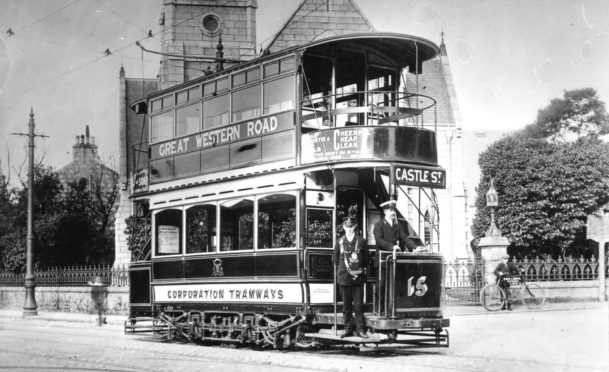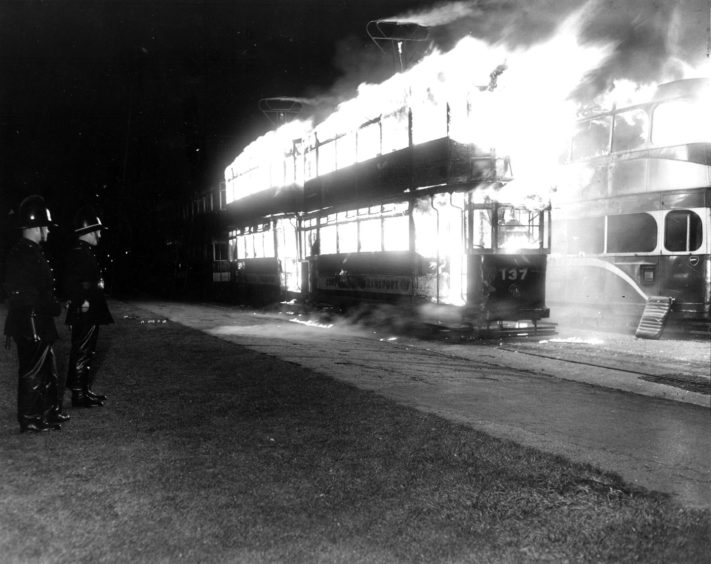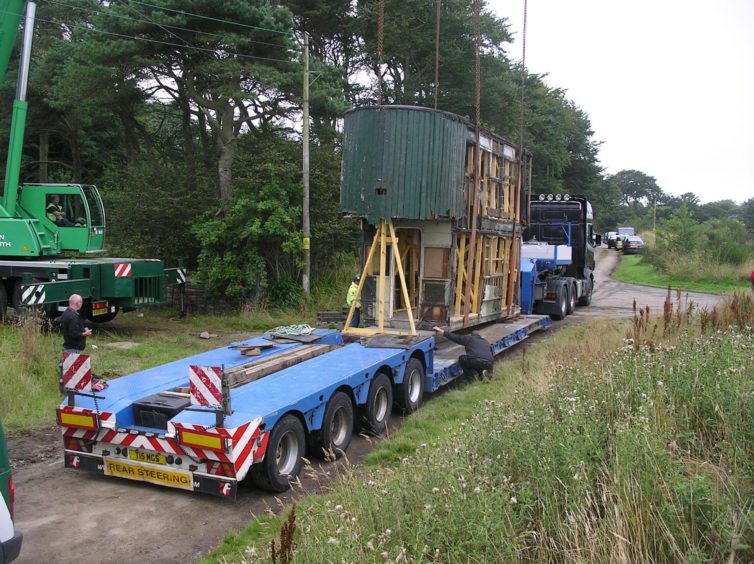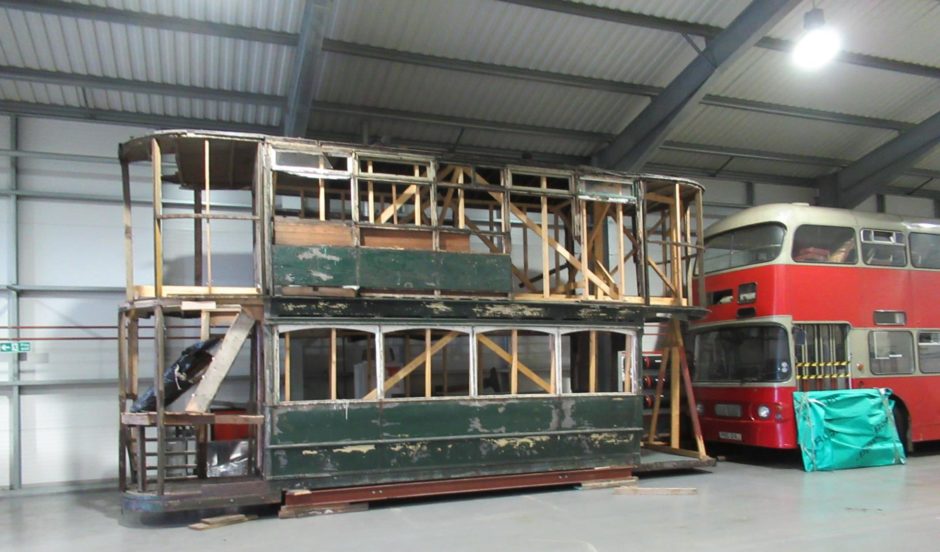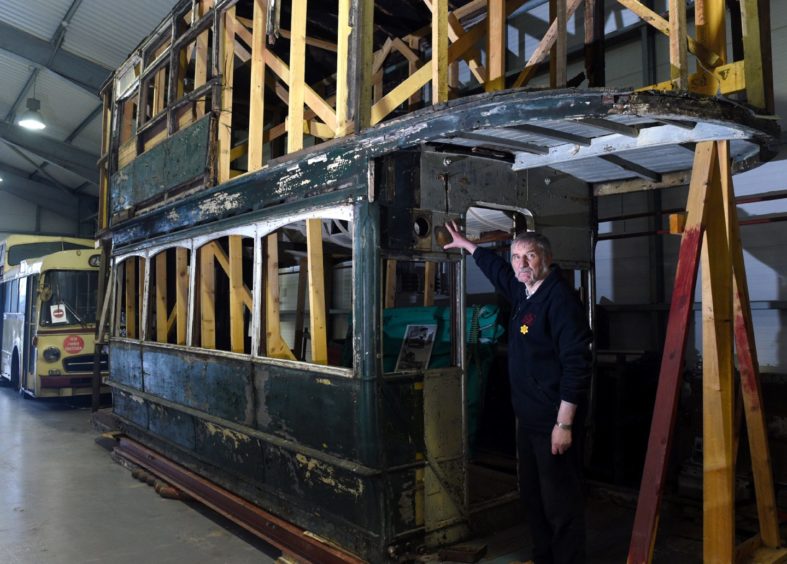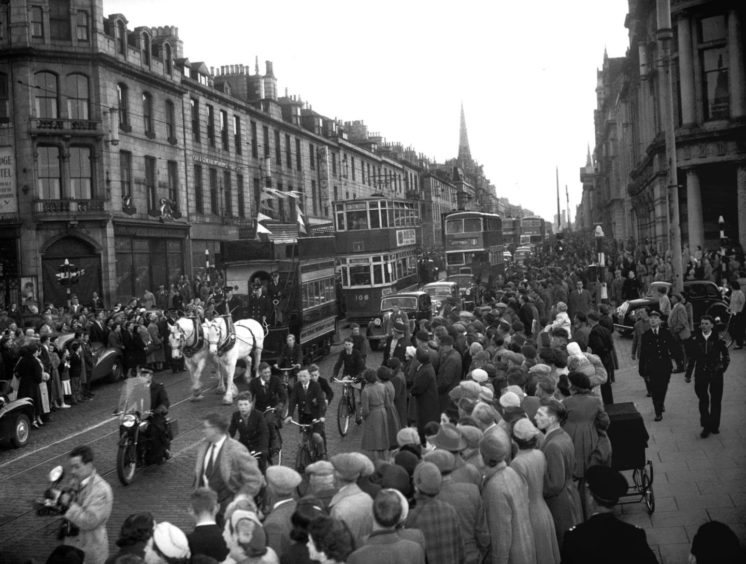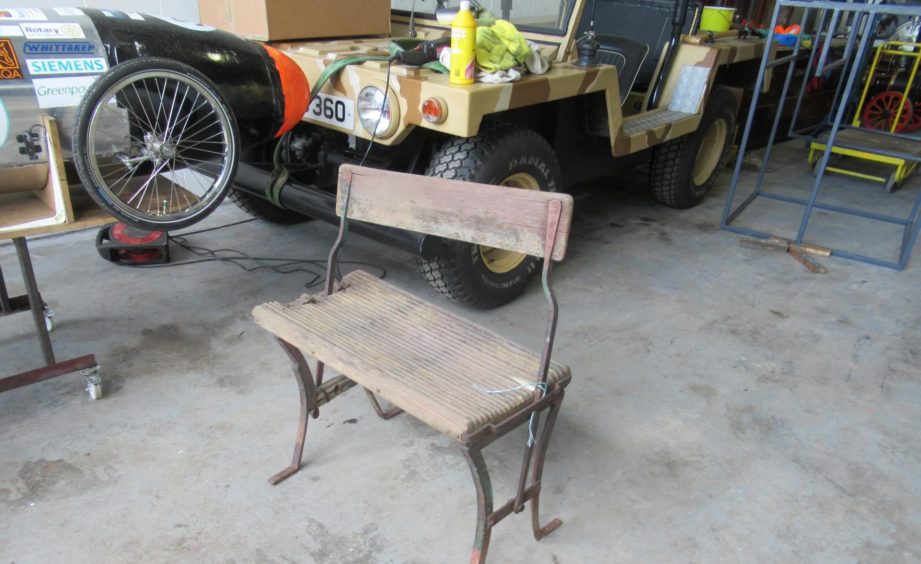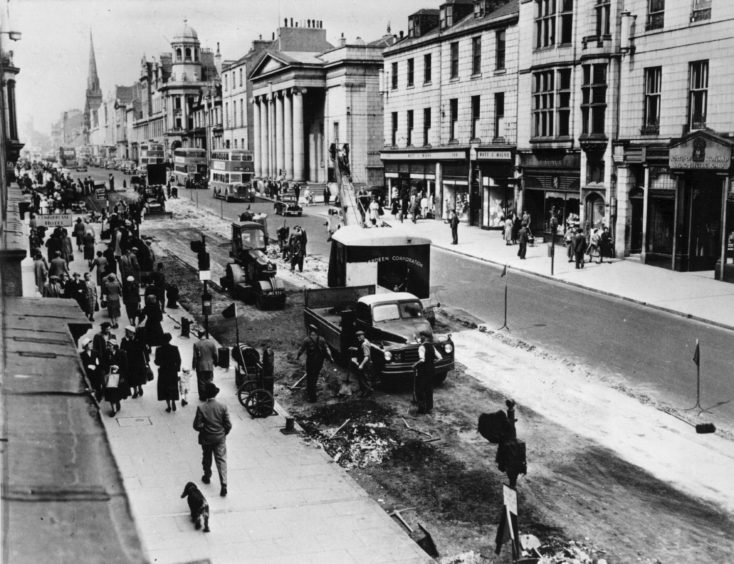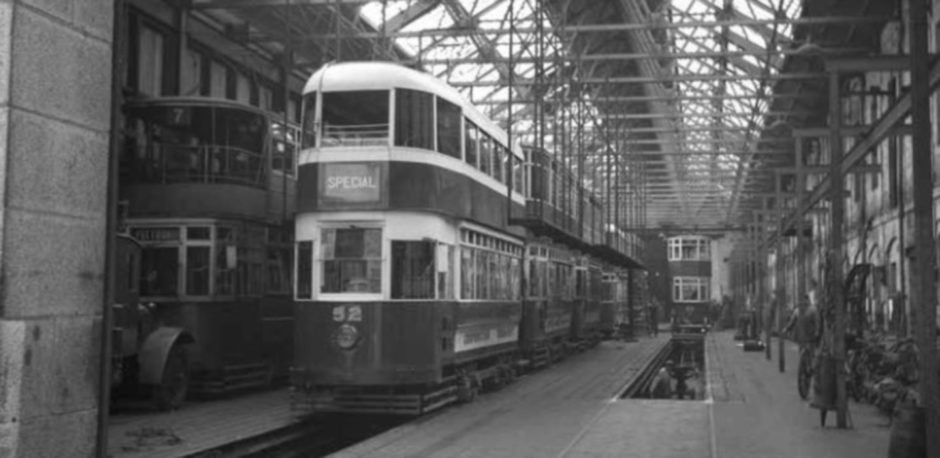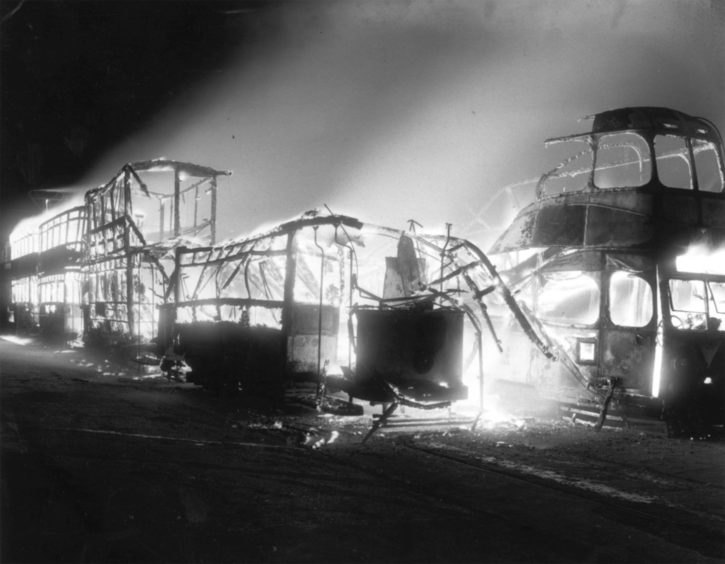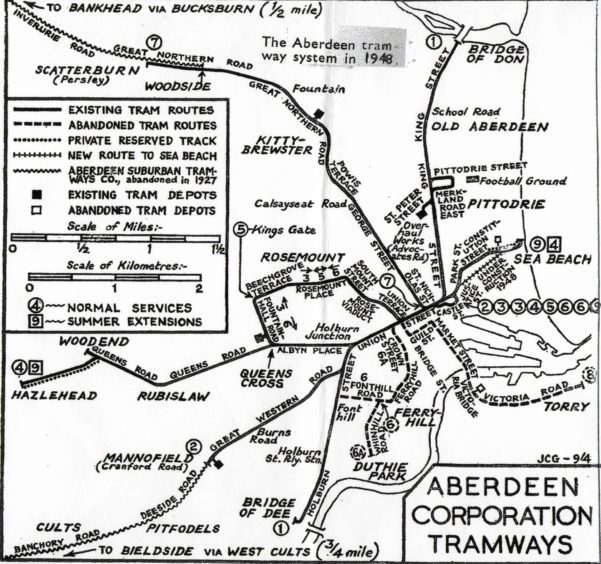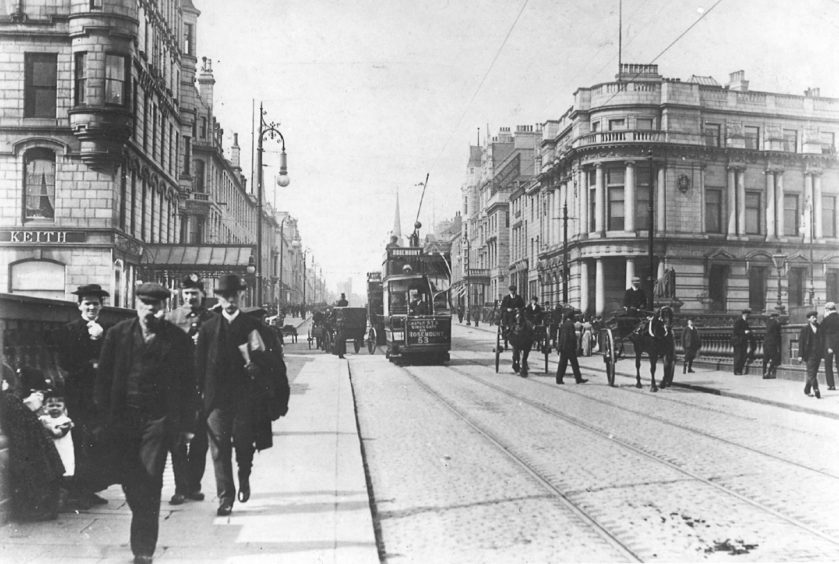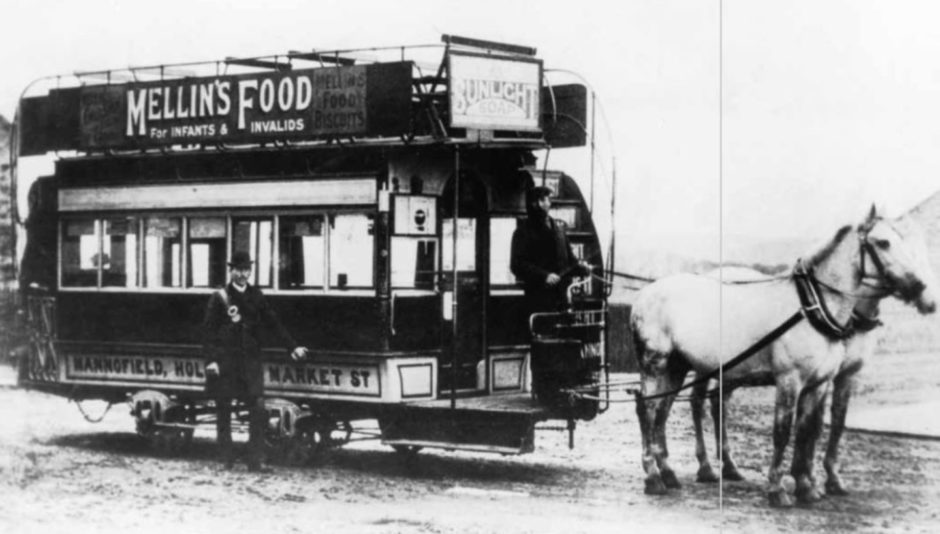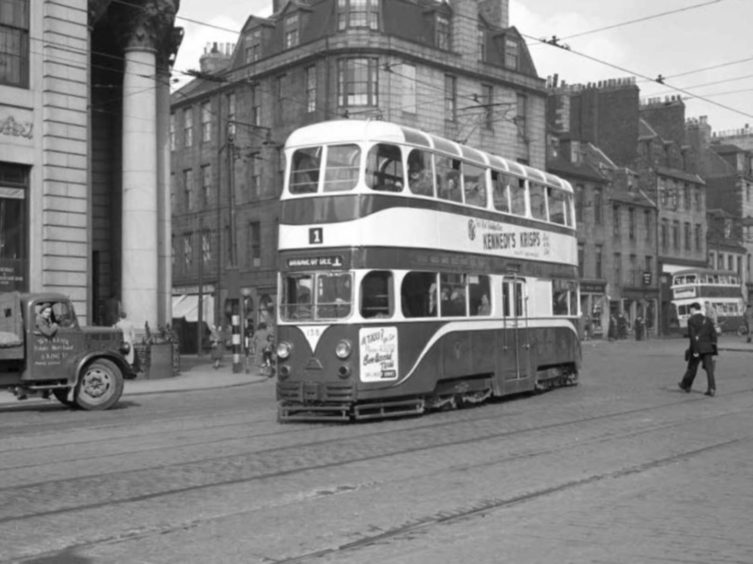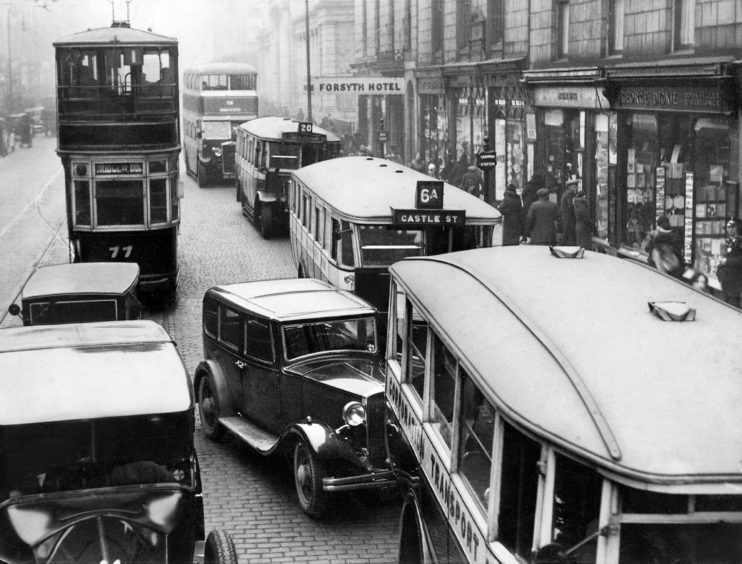It is now 65 years since the death knell sounded for Aberdeen’s trams when the town council decided to abandon the network that had grown too small for the Granite City’s needs.
Three years later, the city’s tram fleet was burnt to ashes in a spectacular bonfire at the beach.
But the history of Aberdeen’s trams is not finished yet. One dedicated group of volunteers is determined to give the people of the north-east another chance to take a trip on an iconic city tram – Tram 15.
Today it is a shell, but in its heyday Tram 15, built in 1901, would have been one of the ornate Great War period cars, with its iconic Aberdeen colours of green and white, running on the Mannofield route, ferrying the good people through to the late 1920s.
When we got it,
it was in a
diabolical condition.”
Ian Souter and the rest of the team at Aberdeen and District Transport Preservation Trust are determined to pull off a remarkable restoration for a vehicle that was once declared obsolete, became a weekend holiday home, and was then transformed into a house before being rescued from oblivion.
“When we got it, it was in a diabolical condition,” said Mr Souter.
“It was withdrawn (from service) in 1929 and was then adapted as a weekend, bijou retreat at Loch of Loirston, just beyond Cove.
“That was until times became hard in the late 1930s, when the family who had it, finally wound up living in it all year round.”
Mr Souter said that in the post-war era, there was a desperate shortage of owner-occupied housing. Only municipal housing was being constructed, with private homes not being built until the 1950s.
“So, how did folk get round that?” said Ian. “What was done in this case was the car body and the site it was on was redeveloped and a major conversion job was done on the car. A masonry block extension was put out one side. The car was turned into a house.
“All the original fittings in the car were stripped out and that was the condition we found it in. But when it went out there it would have had presumably both staircases, handrails, all the ornamental woodwork. It was just a frame that was left – but a lot of the frame.”
Originally, Tram 15 would have been an open-topped car in the second batch of electric trams bought by Aberdeen. In the middle of the 1920s they started putting top covers on trams.
“When we got it, it still had its top deck cover, but we had to strip it of all the housing material from it,” said Mr Souter, adding the trust acquired the car in 2013.
We want to restore
it to a condition
where it can run.”
There was no storage for it at that time so it was housed in the Dundee Museum of Transport until last year, when it was brought back to the trust’s collection centre at Alford, on the grounds of Grampian Transport Museum.
Mr Souter said: “Right now, we are trying to accumulate funds and knowledge and material. The knowledge is in terms of what should there be to get the thing in a running condition. We would like it to be a runner. We want to restore it to a condition where it can run.”
“It’s all very well seeing these vehicles… but to travel on it would be a very different experience. It would give you an idea of how these things operated.”
And, while it is a different and longer-term project to the restoration work, the trust have a real desire to see tracks at Alford to put Tram 15 back into action.
We are scouring
the world
(for parts).”
“But that has not been developed yet,” said Mr Souter. “We have enough to do with getting the car going.”
In the interim, a restored Tram 15 might be loaned to other transport museums with working tracks, but its home base would always be Alford.
As for finding the parts to restore Tram 15, Mr Souter said: “We are scouring the world.”
Already, the trust has acquired running gear for the car.
The framework with wheels, axles and motors, came from Oporto, in Portugal as tram cars around the world used similar designs.
The trust will need to have the bodywork, upholstery and other fixtures recreated – and are looking to the people of Aberdeen to help.
“It was a feature of Aberdeen tram cars that the lower saloon had buttoned leather padded seats, but upstairs on this car were plain wooden seats and that’s something we are going to have to recreate,” said Mr Souter.
“When all these old tram cars were withdrawn, the wooden seats upstairs were in great demand as garden furniture. Some of them survived a long time. So we would invite folk who might happen to have one still lying about to get in touch with us.”
Any photographs of these old seats and a chance to measure them, would give the trust a better idea of what they would have looked like to recreate them more faithfully.
Right now the tram is held in storage. It has been measured and the details of construction examined, but the trust is keen to get working on restoring it once funds are in place.
“It will cost £500,000 to restore and the fund is considerably less than that at the moment,” said Mr Souter, saying a support group for fundraising and grant applications is being put together.
“Just how long it will be before we can see Tram 15 restored depends on the funding.”
If you would like to donate to the work on restoring Tram 15 – and maybe one day take a ride on it for old time’s sake – visit the trust’s page here.
Why Aberdeen’s trams went off the tracks
The burning of Aberdeen’s trams at the beach is one of the most iconic images of the Granite City’s history… but hardly anyone would have seen it at the time.
“I think only a few people in the know went down, the majority of Aberdeen were tucked up in their beds not really worrying about it,” said Keith Jones, a member of the Great North of Scotland Railway Association.
“But for those who knew what was happening and were interested in trams, it would have been quite a sad and nostalgic evening.”
The fleet was set ablaze on May 3 1958 following a grand parade through town and down Union Street for one last time, with people flocking to see them trundle past.
By burning them they were
reduced down to the basic
metal, which had scrap value.”
The cars were destroyed that night for a simple reason. At that time no one wanted to buy second-hand trams as cities across the UK shut down their tram systems. The Aberdeen cars were valuable only as scrap, sold to a dealer in England.
“There was a lot of wood, rubber and fabric in the trams, by burning them they were reduced down to the basic metal, which had that scrap value,” said Mr Jones.
That great bonfire at the beach was the end game of a decision made by the council in 1955 to abandon the tram service. It wasn’t a bolt from the blue, though. Aberdeen had outgrown its trams.
“By the 1950s, Aberdeen had expanded in such a way there were many parts of the city that were served by buses, which paralleled the tramlines then went on beyond,” said Mr Jones.
It was far, far too
expensive to consider
serving the new suburbs
by tramway.”
“For example, there was a tramline that went up round Rosemount, Fountainhall Road and Queen’s Cross, whereas the city had then expanded up to Mastrick and Northfield.
“It was far, far too expensive to consider serving the new suburbs by tramway since the buses were running over the tram routes in place.”
He added that a large part of the tram fleet needed renewal at that time as did the infrastructure with tramlines wearing out over the years.
Buying and running diesel buses was a far less expensive option.
“It was a no-brainer,” said Mr Jones.
“Also, at the time trams were perceived to be the cause of traffic congestion. In Aberdeen for most of the case, the trams ran in the centre of the road, which meant traffic following a tram was held up as passengers were alighting.
“And, finally, trams were unfashionable in Britain of the post Second World War era.”
Already several tram routes around the city had been stepped down, such as Torry and Mannofield.
“Although the decision in 1955 saw the end of the trams by 1958, it was part of a process that had started in 1930,” said Mr Jones.
The first tramlines arrived in the city in 1874 and were drawn by horse. They would have faced some tough climbs over Aberdeen’s hilly landscape.
“They had two horses who were changed over regularly, so they tried not to take too much out of the poor beasts, but going up Rosemount and Holburn Street would have been quite a feat for some of the tramway horses,” said Mr Jones.
The heyday for Aberdeen’s trams came in the
1920s and through the 1930s, when they were
the main means of public transport in the city.”
The city’s tram service grew rapidly, a process sped up by the introduction of electrified lines around the turn of the century. The routes included Rosemount, Ferryhill, Mannofield and Hazlehead and the number one route running from the Bridge of Dee to the Bridge of Don.
The heyday for Aberdeen’s trams came in the 1920s and through the 1930s, when they were the main means of public transport in the city.
Mr Jones has memories of his own trips on the trams.
When he was a primary pupil living on Balmoral Road in 1957 he attended Aberdeen Grammar School.
“The quickest way from Balmoral Road to the Grammar School on Skene Street was to get on a tram in Holburn Street and ride about half a dozen stops to Holburn Junction.
“So I travelled on the trams regularly for the last few months of their life,” he said.
“Aberdeen kept their fleet in good order, so the modern trams were the equivalent of contemporary buses of the period in terms of travel and comfort.”
But for all the nostalgia that still lingers for Aberdeen’s trams, Mr Jones doubts we will see them return.
“I don’t think the city is big enough. I can’t really seeing as something feasible in Aberdeen.”
